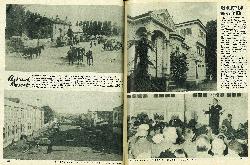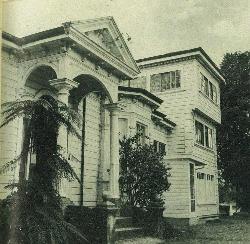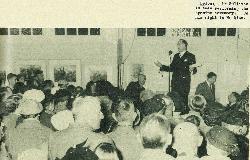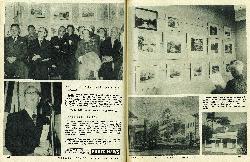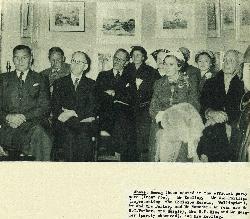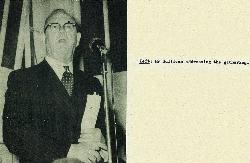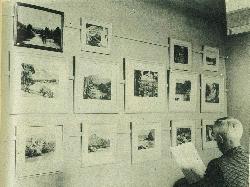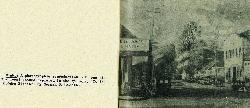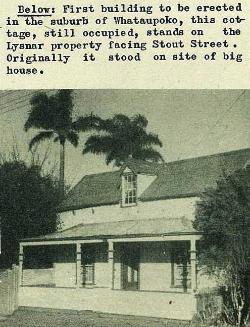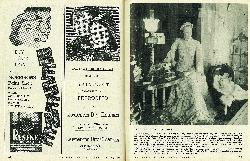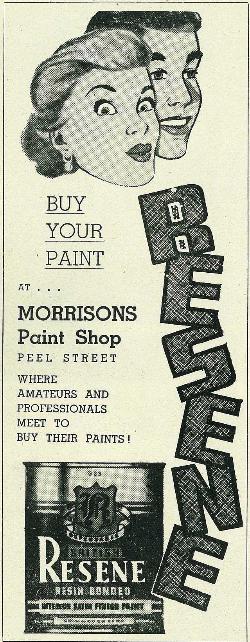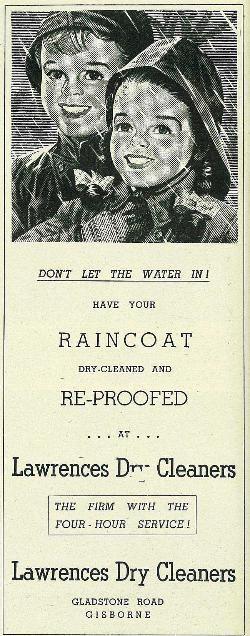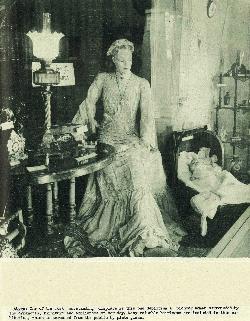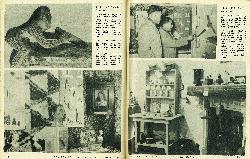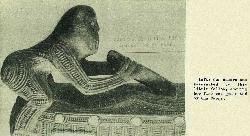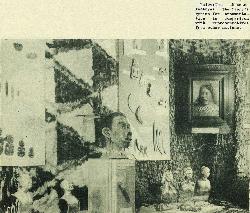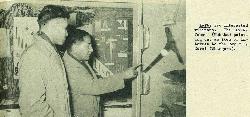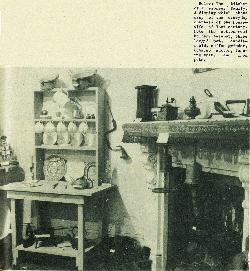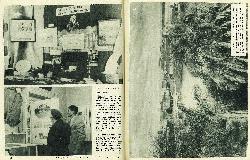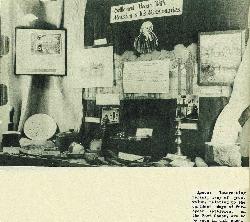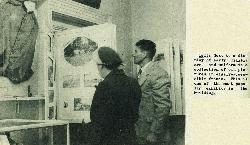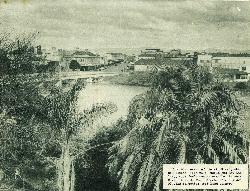39
Art Gallery and Museum Opened
In the handsome premises at left, formerly the home of Mr and Mrs W. D. Lysnar, Gisborne's Art Gallery and Museum was opened on June 11. The intention was to hold the opening ceremony in the spacious 2½-acre grounds surrounding the building, but bad weather forced a move indoors, where about 200 people crammed into the gallery for the function.
Mr H. F. Wise, vice-president of the Gisborne Museum and Art Society, welcomed the official party, which included the Minister of Housing, Mr. W. Sullivan, the Mayor, Mr H. H. Barker, and the Member for the District, Mr R. A. Keeling.
Mr Sullivan is seen performing the opening ceremony. On his right is Mr Wise.
40
Among those seated in the official party were (front row), Mr Keeling, Mr W. J. Phillips (representing the Dominion Museum, Wellington), Mr and Mrs Barker, and Mr Maunder. At rear are Mr R. C. Parker, Mrs Quigley, Mrs H. F. Wise and Mr Qiuigley (partly obscured), and Mrs Keeling.
Mr Sullivan addressing the gathering.
41
In what used to be the ballroom of the Lysnar home, where Admiral Jellicoe once danced, Mr Frank Wise, one of the architects of and leading workers for the establishment of an art gallery and museum, takes a moment off to reflect on the attractive watercolours of his fellow Art Society member Mr A. Christie.
A photographic reproduction of one of the local scenes depicted in the gallery. It is "Cobden Street", by Norman W. J. Scott.
First building to be erected in the suburb of Whataupoko, this cottage, still occupied, stands on the Lysnar property facing Stout Street. Originally it stood on site of big house.
42
43
A surprising collection of early day relics, both Maori and European, has been assembled in the museum at Kelvin Rise. For months a group of workers, led by the former Director of the Museum, Mr Leo Fowler, has been at work classifying the thousands of objects involved, and preparing displays which would be largely self-explanatory. The result of their work was the subject of high praise from the many visitors who have already been through the museum. It is safe to say that anybody with more than a passing interest in the "history of the district could well return again and again to absorb the wealth of material and information set out at Kelvin Rise.
One of the most outstanding displays is this one depicting a pioneer woman surrounded by the ornaments, furniture and appliances of her day. Many valuable heirlooms are included in this exhibition, which is screened from the public by plate glass.
44
As would be expected in a district as well-populated with Maoris as the East Coast, a large and important part of the museum is devoted to native collections and there are many valuable and interesting items on display.
45
Two interested visitors. The Rev. N. Tehau (Nuhaka) pointing out an item of interest to the Rev. W. B. Rurei (Whangara).
The kitchen of a pioneer family. A display which shows many of the everyday chattels of the housewife of last century. Note the cotton–reel holder, tea-pot, three legged pot, candle-mould, coffee grinder, tobacco cutter, turning spit, and iron pots.
46
Interesting relics, many of great value, relating to the earliest days of European settlement on the East Coast, are to be seen in this case.
Next to a display of early militia arms and uniform is a collection of old pictures in easily-accessible frames. This is one of the most popular exhibits in the building.
Efforts to establish a museum were made after World War I by the P.B. branch of the N.Z. Philosophical Institute, but proved fruitless. The Institute was disbanded in 1924.
47
From the tower of "Kelvin Rise", which now houses Gisborne's Museum and Art Gallery, view looks out across the Taraheru River towards Peel Street. Note children playing in bottom left-hand corner.


